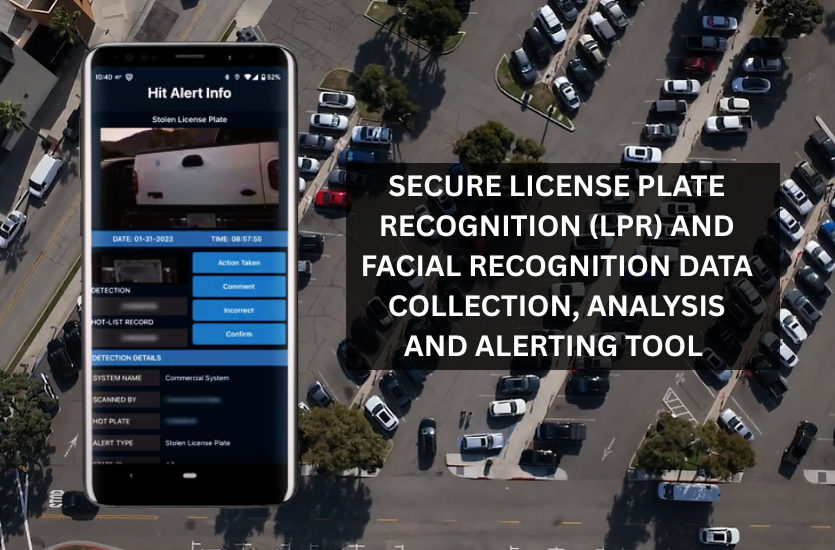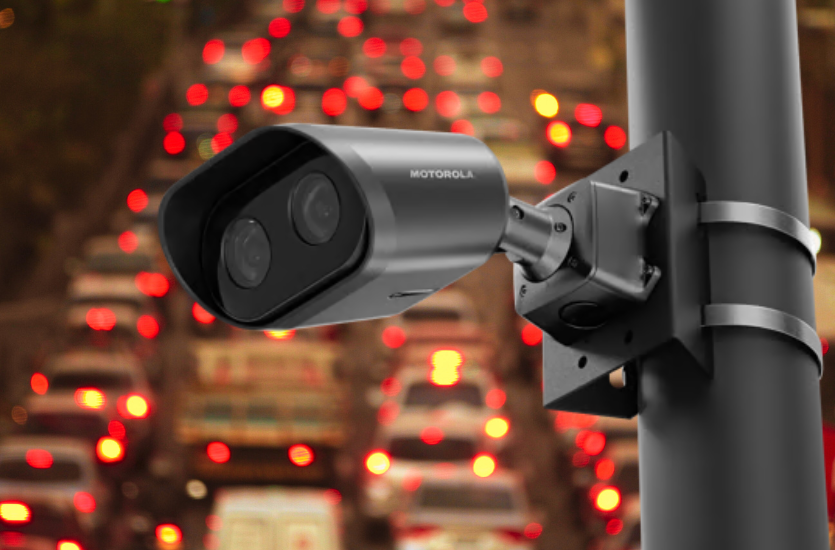Whether you are a business owner, a law enforcement officer, or just a member of the community, you want a safe place for everyone to live and work. When crimes happen, you want a quick resolution. One tool that helps achieve this is license plate recognition (LPR) systems.
These systems are becoming super important for communities and organizations looking to improve safety and efficiency. They automatically capture and analyze license plate data and help track vehicles in real time. Generally, these tools fall into two categories: mobile LPR systems, often mounted on patrol cars, and fixed LPR systems, installed at gates or along roads.
Recent reports indicate progress in public safety, and we all want that trend to continue. Homicides decreased by 17% in the first half of 2025 compared to 2024. Major cities saw a 21% drop in the first quarter. Other violent crimes, including robbery, sexual assault, aggravated assault, and gun assaults, also went down. As security strategies evolve, this article looks at whether mobile or fixed LPR systems are the right choice for your needs and if they can help reduce crime rates.
What are Mobile LPR Systems?
Mobile license plate recognition (LPR) systems are designed to travel wherever enforcement or security teams go. Mounted on patrol vehicles, security trucks, or other fleet cars, these systems use cameras and software to scan and process plates in real time as the vehicle moves through an area.
A typical mobile setup includes multiple cameras strategically placed on the roof, trunk, bumper, or even in covert positions. These cameras often use a combination of color overview lenses (to capture the make, model, and vehicle type) and infrared (IR) cameras (to capture plates clearly, even in low light). This combination gives officers or security personnel immediate situational awareness. They can know not just the plate number but also whether they’re looking for a red sedan or a black pickup.
Mobile systems are best in densely populated areas, busy parking lots, hotel zones, or campuses where there’s a constant flow of vehicles. They allow patrols to cover ground quickly, scanning thousands of plates in a single shift. With hot lists uploaded directly into the onboard computer, alerts for stolen vehicles, wanted individuals, or other flagged plates appear within seconds, giving officers the ability to respond on the spot.
Advantages of Mobile LPR Systems
When weighing mobile vs fixed LPR options, mobile systems offer distinct benefits that make them especially valuable for patrol-based or flexible security operations. Because they move with the vehicle, these systems can adapt to changing needs and cover areas that static cameras cannot.
Here are the advantages of mobile LPR systems:
- Wide coverage area with fewer units needed
- Quick deployment without the need for infrastructure or site preparation
- Ability to scan thousands of plates in motion during a single shift
- Real-time alerts that officers or security staff can act on immediately
- Flexible use across different neighborhoods, campuses, or commercial areas
- Cost-effective compared to fixed systems that require permanent installation
- Easy integration with hot lists for stolen vehicles, warrants, or flagged individuals
- Can be transferred between vehicles or fleets if operational needs change
Limitations of Mobile LPR Systems
While mobile LPR systems offer flexibility and quick deployment, they also come with certain drawbacks that organizations should carefully weigh before investing. Unlike fixed systems, mobile units depend heavily on patrol patterns and staffing levels, which can limit their effectiveness in some environments.
Here are some of the drawbacks that come with mobile LPR systems.
- Coverage gaps when patrol vehicles are not on the road
- Dependence on officer or driver availability and schedules
- Less effective in rural or low-traffic areas with fewer vehicles to scan
- Potential for officers to alter patrol routes to maximize reads, reducing focus on other areas
- Limited operation to one shift or vehicle if part of a take-home program
- Electrical load concerns when added to vehicles already running multiple systems
- Not ideal for permanent choke points such as gated communities or fixed facility entrances
These limitations highlight why mobile LPRs are often the best choice for patrol-based security, parking enforcement, or short-term deployments, rather than as a sole solution for 24/7 monitoring.
What are Fixed LPR Systems?
As the name implies, fixed license plate recognition (LPR) systems are stationary units designed to monitor specific access points or stretches of roadway no matter what time of day it is. Unlike mobile systems that move with a vehicle, fixed LPRs are mounted on structures such as gate arms, poles, or overpasses to continuously scan all vehicles passing through a given location.
Similar to mobile systems, fixed systems typically use high-resolution cameras, often paired with infrared (IR) technology, to capture plates clearly in both day and night conditions. However, because they remain in one place, fixed LPR systems are highly effective at natural choke points, like gated community entrances, facility checkpoints, or toll roads, where every vehicle must pass through.
By operating 24/7, fixed systems provide constant surveillance without requiring personnel to be physically present. This makes them particularly valuable for HOAs, logistics hubs, corporate campuses, and municipalities looking to automate security and access control.
Advantages of Fixed LPR Systems
When comparing mobile vs fixed LPR options, fixed systems excel in providing reliable, round-the-clock monitoring at critical access points. Because they are permanently installed, these systems deliver consistent coverage and reduce the need for constant patrol presence.
Here are the key advantages that you can expect.
- 24/7 monitoring without staffing requirements
- Reliable coverage at choke points like gates, entrances, and exits
- Flawless integration with automated gates and access control systems
- High read volume in areas with steady traffic flow
- Lower long-term labor costs compared to patrol-based systems
- Elevated installation reduces obstructions for more accurate reads
- Scalability across multiple entrances or facilities for broader protection
- Consistent data capture that supports investigations and audits
Limitations of Fixed LPR Systems
While fixed LPR systems do indeed provide continuous coverage and reliability, they are not without drawbacks. Their stationary nature means they are limited to specific points of entry or roadway segments, which can reduce flexibility compared to mobile systems.
We encourage you to weigh the following potential challenges carefully before committing to a fixed solution.
- High upfront installation costs for hardware, power, and connectivity
- Limited to the area where cameras are installed, with no ability to patrol beyond that point
- Site preparation can be time-consuming, especially in locations lacking existing infrastructure
- Potential difficulties gaining approval to mount cameras on public or state-owned structures
- Maintenance requirements for equipment, wiring, and communication links
- Less effective if vehicles have multiple alternate routes to bypass monitored areas
Despite these limitations, fixed systems remain highly effective in locations where consistent, choke-point monitoring is critical.

Industries and Applications That Benefit from Mobile LPR
Now that we’re aligned on the differences between mobile and fixed LPR systems, let’s discuss the industries that benefit from each type. Mobile LPR systems are especially valuable in environments where flexibility, mobility, and broad coverage are priorities. Because they travel with patrol or service vehicles, these systems can adapt to changing needs and deliver real-time intelligence in the field.
Here are the industries and applications that typically benefit the most from mobile LPR:
- Law enforcement: Patrol vehicles can instantly identify stolen cars, wanted individuals, or vehicles tied to ongoing investigations.
- Private security patrols: Mobile units allow officers to monitor large campuses, hotels, or neighborhoods that require roaming coverage.
- Parking enforcement: Mobile LPR simplifies scanning for expired permits or unpaid tickets across city streets or private lots.
- University and corporate campuses: Security teams can cover parking structures and surface lots more efficiently than with static cameras alone.
- Event management: Temporary deployments help monitor vehicle flow at large gatherings such as concerts, festivals, or sports events.
Mobile systems definitely stand out amongst their fixed competition, where flexibility and area-wide coverage are more important than permanent monitoring at a single access point.
Industries and Applications That Benefit from Fixed LPR
Fixed LPR systems are intended for use in locations where vehicles pass through predictable points, such as gates, entrances, or designated roadways. Their stationary placement makes them a strong choice for organizations that want consistent monitoring without the need for constant patrol presence.
Here are some examples.
- Homeowners associations and gated communities: Automate gate access, distinguish residents from visitors, and maintain logs of incoming and outgoing vehicles.
- Commercial facilities: Secure entrances for staff, vendors, and deliveries while keeping a record of traffic.
- Logistics and warehouses: Track trucks entering and leaving to improve accountability and scheduling.
- Municipalities: Use roadside installations for traffic management, toll collection, or to identify vehicles of interest.
- Corporate campuses: Monitor access points to large business parks without dedicating additional personnel.
Fixed systems are popular for consistent, location-based monitoring where every vehicle must pass through a designated entry or exit.
Cost Considerations: Mobile vs Fixed LPR
Let’s talk about cost, as we all know that this is a big factor in determining the best system for your needs. Mobile systems generally require a lower initial investment since they are mounted directly on patrol or service vehicles. Expenses are tied mainly to the cameras, mounting hardware, and onboard computer, with prices ranging from a few thousand dollars upward depending on system features
However, mobile systems carry ongoing labor costs, as they only function when vehicles and staff are deployed. Fixed systems, on the other hand, involve higher upfront expenses due to infrastructure, power, and connectivity needs. Installation can be time-consuming and may require coordination with property owners or municipalities.
Over the long run, fixed systems reduce staffing requirements by operating continuously, which can balance out the initial cost. The choice often comes down to whether an organization prioritizes lower entry costs with recurring labor, or higher installation costs with continuous coverage.
Choosing the Right LPR System for Your Needs
Deciding between mobile vs fixed LPR systems depends on your environment, budget, and long-term goals. Mobile systems work well for patrol-based operations, parking enforcement, or areas that require flexible coverage. Fixed systems tend to be best for gated communities, logistics hubs, or facilities that need continuous monitoring at defined entry points. In some cases, combining both offers a balanced approach.
At EMCI Wireless, we help organizations across Florida. including Miami, Tampa, Orlando, and Jacksonville, select and deploy the right LPR technology for their needs. From assessing site conditions to recommending the most practical system type, our team provides guidance every step of the way. By aligning technology with your unique challenges, EMCI Wireless can help you strengthen safety and operational efficiency across your property or community.
Get Your Consultation on the Calendar with EMCI Wireless
If you’re trying to decide between mobile vs fixed LPR, you don’t have to figure it out on your own. We understand that mobile and fixed LPR systems each bring unique strengths, and the right choice depends on how and where you need coverage.
Whether it’s patrol-based monitoring or permanent entry-point control, aligning technology with your specific goals can make a measurable difference. EMCI Wireless has extensive experience helping Florida businesses, HOAs, and public organizations put the right solutions in place.
Ready to explore which system fits your needs best? Schedule a free consultation with EMCI Wireless today.

